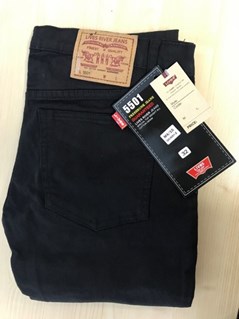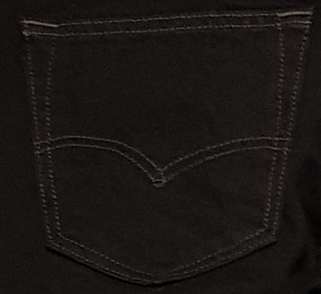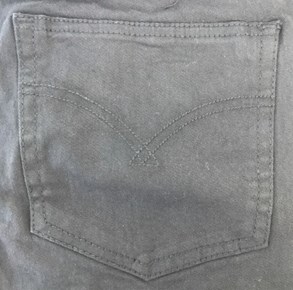Levi Strauss & Co. (“LS&Co.”) secured a success in a trademark infringement case involving the use of imitated trademarks at the Central Intellectual Property and International Trade Court (the “IP Court”) in Thailand. The outcome of this case shows that preparing a good litigation strategy is the key to getting favourable results for brand owners.
On 2 March 2021, the IP Court issued a judgement pursuant to a settlement agreement between LS&Co. and an imitator of Levi’s jeans where the imitator admitted that LS&Co.’s many trademarks, including the Two Horses Device  , the LEVI STRAUSS & CO. and Two Horses Device label mark
, the LEVI STRAUSS & CO. and Two Horses Device label mark  , the Batwing
, the Batwing ![]() and
and ![]() , the Arcuate Device and Tab Device
, the Arcuate Device and Tab Device ![]() and
and ![]() , the word marks “LEVI’S” and “LEVI”, and “LEVI’S 501” are well-known marks. The imitator also admitted that the trademarks ,
, the word marks “LEVI’S” and “LEVI”, and “LEVI’S 501” are well-known marks. The imitator also admitted that the trademarks ,  ,
,  ,
,  and other marks used on the imitation jeans are confusingly similar to LS&Co.’s Two Horses Device mark and the label mark
and other marks used on the imitation jeans are confusingly similar to LS&Co.’s Two Horses Device mark and the label mark  , among many others. The imitator agreed to withdraw the imitating marks pending registration, stop the use of and not reapply for any of the disputed marks in the future. The imitator also agreed to pay any penalty fines in case of any breach.
, among many others. The imitator agreed to withdraw the imitating marks pending registration, stop the use of and not reapply for any of the disputed marks in the future. The imitator also agreed to pay any penalty fines in case of any breach.
The settlement and the judgement were concluded in the first hearing of the witness testimony. This is an example of how having concrete evidence and thorough case preparation in the pre-litigation process can sometimes bring a quick and favorable outcome to the brand owner while avoiding issues of corruption that still haunt criminal raid actions.
|
Comparison between LS&Co.’s jeans and the imitation jeans |
|
|
LS&Co.’s jeans |
Imitation jeans |
|
|
 |
 |
 |
 |
 |
Raid actions are often the conventional method used to deal with imitation products. Brand owners would conduct investigations and contact the police to carry out raid actions. The police would then execute the raid and pass the case to the public prosecutor to file a criminal lawsuit to the IP Court. Infringers would very often plead guilty and are usually imposed a small fine and suspended jail time. Such light punishments are not enough to deter future or repeat infringers. More importantly, raid actions often come with overt or covert demands of bribery, with such demands sometimes hidden in fees. The reliance on bribery-infused raids and the low penalties in criminal cases sustain the imitation product industry, especially in relation to fashion products in Thailand. An alternative approach to handle such infringers is crucially needed.
One such alternative approach is civil litigation. This option is often seen as costly and time consuming but if managed properly, it can be a solution to the criminal route that perpetuates the imitation industry. Although not the quickest in the region, Thailand’s IP Court can now conclude a case in the first instance within 2 years’ time. Appeals to a higher court are often concluded within a year’s time. One way that potentially makes the civil option even less time and cost consuming is the fact that the IP Court will usually encourage parties to enter into mediation before the full trial starts. If the brand owners’ case is well-prepared with strong affidavits and supporting evidence prior to the witness testimony hearing, the imitators may fear that they will lose the case and be more cooperative and receptive to settlement terms favorable to the brand owners. The parties may also agree to a settlement agreement favouring the brand owner and the IP Court can issue a judgement pursuant to the agreement. The agreement will normally include a sanction into the form of a substantial fine in case of a breach. It means that if the imitator does breach the agreement, the brand owner will be able to enforce the judgement and demand for the fine without having to pursue a new action against the imitator. Because the fine in the agreement is usually of a substantial amount, the settlement can end up being more deterrent than the small fine and suspended jail time imposed from winning a criminal lawsuit. Proper sanctions in the settlement agreement are therefore crucial to discourage imitators from continuing or repeating the infringement. This way, civil litigation can be less costly, time consuming and more effective in deterring infringers for brand owners.
The imitation faced by LS&Co. is not an outlier. Imitators in Thailand are sophisticated in their trademark registration approach. They start off by applying for a mark that imitates a portion of a brand’s famous mark, and they keep applying until they have registrations for marks which are imitations of each portion of the famous marks. The marks are then put together and used on their actual products, producing a near identical copy of the famous brand’s product. On occasion, imitators would even attempt to register the composite mark--which was what happened in the above-mentioned case. From our experience, some imitators know how to avoid raid actions whether by way of using their connections, illegal financial contribution, or by obtaining registrations of imitation marks. They understand the flaws of the criminal system and how to utilize them to their advantage. Nonetheless, having a good strategy when taking civil action is a relatively new approach to this problem and, as the case above shows, can also be a good alternative solution.